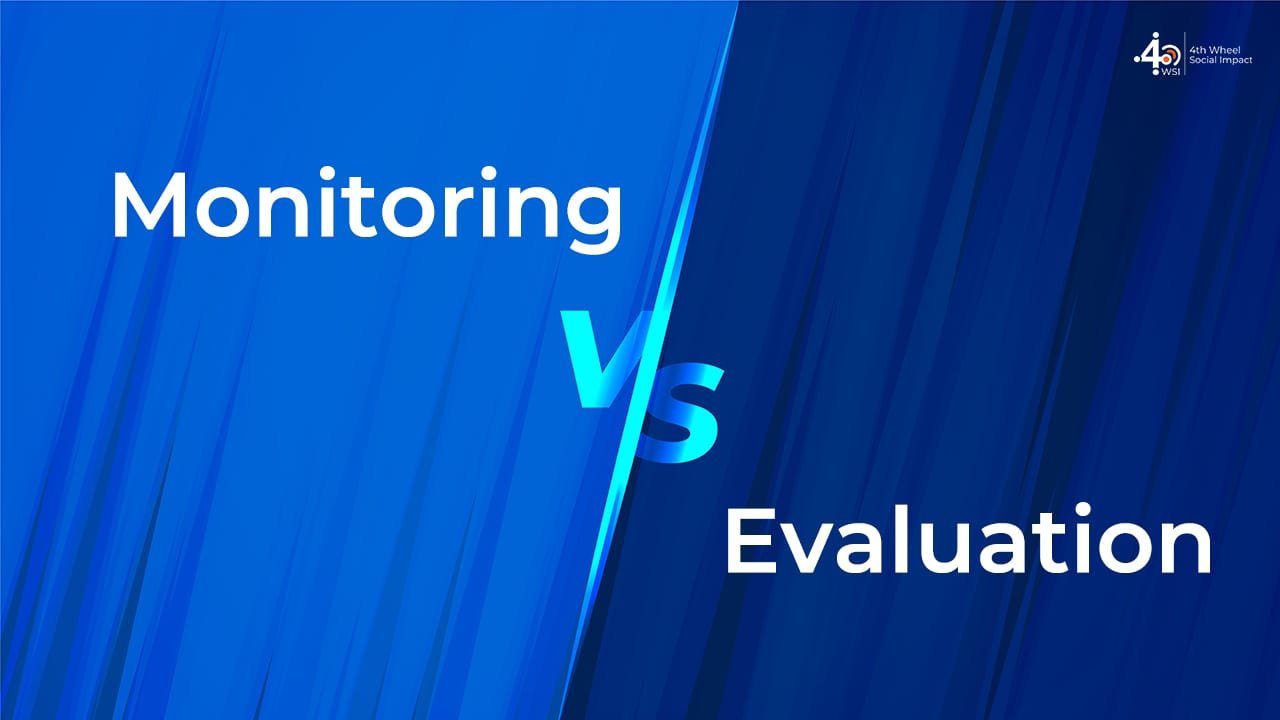Monitoring and Evaluation are two related yet completely diverse instruments which, when applied effectively, can revolutionize the results of any project. The primary purpose of both management tools is to track projects and guide interventions. However, the difference lies in practical application.
What does M&E Mean?
Monitoring at its core is a continuous functional process that routinely scrutinizes the activities undertaken and the advancement of your program or project. It also devises corrective steps to smoothen the trajectory of growth of the project.
Evaluation occurs on a periodic basis after the implementation of the project’s activities. It brings to light conclusive evidence of the efficacy of the project by highlighting the outcomes and impact of the implemented steps and correlating them with factors like the relevance of the project and how effectively it was implemented.
7 Key Differences Between Monitoring And Evaluation
| Monitoring | Evaluation | |
| Meaning | It provides information and recommendations for long-term planning and future projects | Monitoring means keeping track of what you are doing, while you are doing it |
| Why is it done? | To check the progress of the program against the goals and targets laid down | To check the effectiveness of the overall project |
| When is it done? | Begins in the initial stages of the project, and is an ongoing process which regularly tracks the program | Done after a certain point of time, on a periodic basis to measure the success against the objective (eg. mid-term, end-term) |
| Who does it? | Usually the internal team | Evaluation means finding out if you have achieved what you had planned to achieve after you have finished implementing the activities |
| Area of focus? | Input, activities and output of the program | Outcomes, impact and overall goal of the program |
| Why is it important? | Provides information about the status of the program and helps to take immediate remedial actions if necessary | It provides information and recommendations for long term planning and future projects |
| Who uses the results? | The implementation and program management team | Information is useful for all stakeholders like staff, funding agency, beneficiaries, etc |
Importance of Monitoring And Evaluation (M&E)
The main purpose of an M&E framework is to serve as a beacon of knowledge to the organisation and provide a snapshot of the eminent progress and cautionary highlights about a program or a project.
Monitoring helps maintain a smooth flow of activities by taking note of orderly functions, catching any issues early on, and pinpointing corrective measures.
The process of Evaluation assesses the effectiveness of the implementation process and enhances future developmental outcomes by serving as a yardstick for measuring the efficiency of the project.
Eloquent Monitoring and Evaluation provide a compelling foundation and mechanism for a flourishing, developmental program implementation. Both are equally important to instill success into your strategy. They help in:
- Efficiency and Effectiveness: M&E helps organizations streamline their processes, eliminate inefficiencies, and enhance overall effectiveness.
- Quality Assurance: They ensure that your selected projects meet quality standards and deliver consistent, substantial results.
- Long-Term Sustainability: The processes support the sustainability and longevity of the projects by identifying areas for improvement and rectification.
- Optimized Resource Allocation: A strong M&E framework assists in allocating resources where they are needed most, optimizing resource allocation for maximum effect.
- Demonstrating Impact: M&E provides concrete evidence of the impact and outcomes achieved, which is crucial for reporting to stakeholders, donors, and the public.
- Creating Accountability: Monitoring and Evaluation processes help in establishing accountability by tracking progress and ascertaining that the resources accumulated are used in the most optimum manner.
- Harmonized Decision-Making: Results of both processes provide data and evidence for informed decision-making. They allow organizations to make necessary adjustments and improvements in order to bring about the desired scale of impact.
Conclusion
Monitoring and evaluation are distinct yet interrelated processes crucial for effective management and assessment of your project’s activities and overall impact.
Monitoring elementally centres around the continuous collection of data and information during project implementation, offering real-time insights to ensure that activities are on track and objectives are being met.
On the other hand, evaluation comes into play at a periodic, calculative appraisal stage where it provides a comprehensive analysis of the project’s overall impact and effectiveness.
Balancing both processes is the secret to successful, dynamic project completion. Powered by efficient strategy planning and implementation, monitoring and evaluation processes trigger change by enhancing performance. Thus promoting accountability, bettering business practices, and supporting a corroborative, all-around decision-making process.
Works Cited
- “Monitoring and Evaluating Youth Substance Abuse Prevention Programmes”. UNODC.
- “20 Differences between Monitoring and Evaluation”. Public Health Notes. 2017.
- “The Role of Monitoring and Evaluation in Construction Project Management”. Callistus Tengan, Clinton Aigbavboa. 2018.
- “Difference Between Monitoring and Evaluation”. Nedha. 2011.
- Anubha Singh, a Research Associate at 4th Wheel Social Impact has written this article.




